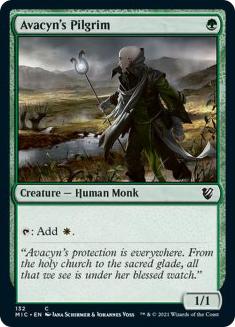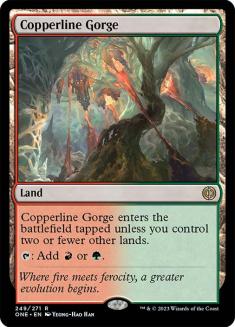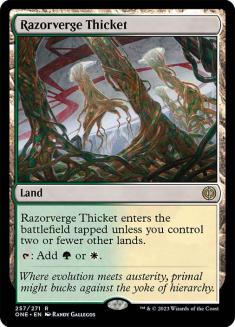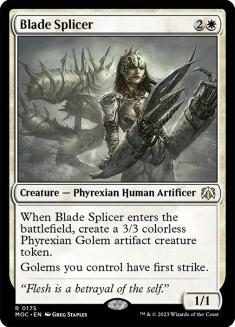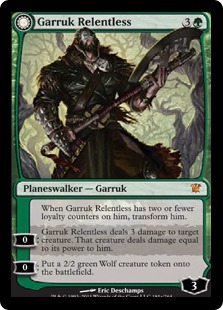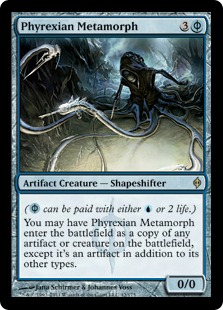I didn’t win Grand Prix Salt Lake City. But you know that already, don’t you? In fact, you may even already know that I finished in an all-too-frustrating 33rd place, the result of a final round draw gone wrong. All told, the Grand Prix was an enjoyable experience, though I can’t help but be disappointed in my result in the end.
It’s a strange position to be in. Throughout a tournament, I’ll constantly have players coming up to me asking me about my record. Almost universally their reaction to my response is very divorced from my personal perspective about how I’m doing. When I’m barely scraping by and need to win out and make Day 2 I hear, “That’s awesome! Just two more wins and you make it!” When the tournament is over and I finish somewhere like the aforementioned 33rd place it’s, “Great job!” And god forbid I pick up three losses on Day 1 and tell them I’m out of the tournament…”What? How could that happen?!?”
I’ll let all of you out there in on a secret of the pros: we lose, too. In fact, we lose a lot. The best winning percentages in the history of the Pro Tour are in the range of 60%. That means losing almost half the time! When you play a lot of high level Magic, you get used to losing. That doesn’t mean you like it—far from it. But it means that you understand that sometimes you’re just not going to win and that you’re okay with that fact. Many players have misguided notions that pros are a bunch of poor sports who get angry at every loss, but that couldn’t be farther from the truth. The vast majority of pro players are extremely friendly and gracious and take every loss in stride. Because if you play enough tournament Magic, one thing you get really good at is losing.
And while keeping cool and being a good sport is one part of that, it’s extremely important to reflect upon and learn from your losses. That’s another thing that separates top players from amateurs. When you hear an amateur player talking about their losses, the most common things you hear are complaints about mana screw, mana flood, and opposing top decks. With pro players, you’ll much more frequently hear them questioning what they might have been able to do differently.
With that in mind, I want to take a look at my losses in my matches at Grand Prix Salt Lake City and see what there might be to learn from them. My record over the course of the tournament was 11-3-1, or 8-3-1 discounting byes. My tournament round by round looked like this:
Round 1-3 — Byes
Round 4 — Win vs. Delver
Round 5 — Loss vs. Delver
Round 6 —Win vs. Frites
Round 7 — Win vs. W/B/R Lingering Souls
Round 8 — Loss vs. GR
Round 9 — Win vs. Delver
Round 10 — Loss vs. WB Tokens
Round 11 — Win vs. Naya Pod
Round 12 — Win vs. Delver
Round 13 — Win vs. G/R Ramp
Round 14 — Win vs. Delver
Round 15 — Intentional Draw vs. Unknown
Broken down vs. different deck types:
4-1 vs. Delver
1-0 vs. Frites
1-0 vs. W/B/R Souls
1-0 vs. Naya Pod
1-0 vs. Ramp
0-1 vs. W/B Tokens
0-1 vs. G/R Aggro
For reference, my decklist for the Grand Prix:
Creatures (29)
- 1 Llanowar Elves
- 4 Birds of Paradise
- 1 Acidic Slime
- 1 Inferno Titan
- 2 Phyrexian Metamorph
- 4 Blade Splicer
- 1 Fiend Hunter
- 3 Avacyn's Pilgrim
- 1 Daybreak Ranger
- 4 Strangleroot Geist
- 2 Thalia, Guardian of Thraben
- 4 Huntmaster of the Fells
- 1 Vorapede
Planeswalkers (2)
Lands (24)
Spells (5)

For those of you who have been following the evolution of this deck, you’ll notice that the maindeck is exactly the same as the one I played at the SCG Invitational two weeks ago in Baltimore. The only change I made was to the sideboard, where I replaced the single Combust and the Grafdigger’s Cage with a pair of Incinerates.
Incinerate might seem like a strange sideboard card, but it was actually the result of a looking for a card that could solve a number of specific problems. Primarily, I was looking for a cheap spot removal spell that I could bring in against Delver because I found the most common way I was losing games was against an early flipped Insect man-thing. Combust could cover that, but I also wanted a card I could bring in against other green decks to win Huntmaster fights.
For those who don’t know how those work: basically, the player who plays a Huntmaster first has a huge advantage since if their opponent also plays a Huntmaster, they can just pass the turn back. Because of the way active and non-active triggers go on the stack, the player with the first Huntmaster can flip theirs and kill the other player’s Huntmaster before it flips. It makes instant speed removal extremely important in G/R mirrors, in particular if your opponent is unaware that you have it, because you can get them to effectively skip their turn to try to kill your Huntmaster while you burn theirs with the trigger still on the stack.
I initially considered Galvanic Blast for this purpose, since it’s the most efficient spell to deal with both Huntmaster and Delver, but ultimately settled on Incinerate because it can also kill Dungeon Geists, a card that I knew would increase in popularity after Yuuya’s success with it at Grand Prix Kuala Lumpur. The additional point of damage is also important to kill an opposing Huntmaster if Gavony Township is in play, since your opponent could just respond to your Galvanic Blast by activating Township and totally blow you out.
Anyway, on to the losses—and the lessons:
In round 5 I played against my second Delver deck of the day, and I was feeling good going into the match after a win over the same deck (on camera, no less! By the end of Saturday, I’d played a full half of my matches on camera—I suppose that’s what happens with paired streams). My opponent made a comment about all his friends reading my article about the deck the night before and having to decide whether they wanted to play my deck or change their deck to beat it. It turned out my opponent had chosen the latter.
In the first game he had a pair of Gut Shots to kill my first two mana creatures, and I was stalled with just a Forest and a Gavony Township while I got beaten down with a grip full of goods. In the second game, I sideboarded as per my normal plan against equipment Delver (since I’d seen an Invisible Stalker in the first game). I landed an early Thalia, but my opponent had a pair of Dungeon Geists to lock down my big creatures and brick wall the rest, and I soon succumbed with a second Thalia and an Ancient Grudge in my hand. After the match, my opponent told me he’d taken out his Stalkers and Pikes to bring in the extra Dungeon Geists (among other things).
So what can we learn from this? Well, a few things, but they dovetail together into one major lesson: when you’re sideboarding, it’s important to take your opponent’s sideboard into account. Thalia is an extremely powerful card against Delver decks but matches up poorly against Dungeon Geists. Not only does she do nothing to keep Dungeon Geists off the board (except increase the cost of your opponent’s cantrips they might use to assemble the requisite four land to cast it), but she’s also a near blank on the board when a Dungeon Geists is in play.
This is especially problematic because she’s a legend, and you can easily get stuck with additional copies of her in hand. Normally the long game favors you thanks to cards like Huntmaster and Township, but when you’re drawing blank duplicate legends and your opponent has four copies of Dungeon Geists that you’re not well set up to deal with, that dynamic can completely change.
Similarly, it’s important to recognize that your opponent’s plan may shift between games. While Yuuya’s Delver build is largely focused around Runechanter’s Pike in game 1, that focus can shift in the subsequent games, and Delver is not the sort of deck you can afford to be holding dead cards against. While it can be hard to predict your opponent’s choices perfectly, it’s important not to overcompensate with a class of removal when there’s the possibility it might be dead.
As a result, I decided to cut a Thalia from the sideboard for another removal spell—for now it’s Combust, but I could easily see playing a single copy of Corrosive Gale if the Spirits version of Delver increases in popularity. To see my updated list in action, check out my videos this week here.
My second loss came at the hands of Ricky Sidhier playing a G/R aggro deck very similar (if not identical to) the one Michael Hetrick used to finish in the Top 8. This was what my hand was in the first game:
I played my Pilgrim then a Blade Splicer to Ricky’s Birds of Paradise and Sword of War and Peace. I failed to draw a land and played another Blade Splicer, while Ricky attacked me for six, gained a bunch of life, and played a Llanowar Elf. I again failed to draw a land and played the Llanowar Elf I’d drawn, while Ricky Acidic Slimed my Copperline Gorge. I copied his Slime with my Metamorph to kill his Sword, and he Green Sun’s Zenithed for a Huntmaster.
I finally drew another land and used Garruk to kill his Huntmaster, but he promptly Zenithed for another. I had to sacrifice my Garruk and a Blade Splicer to fetch a Fiend Hunter to take out his Huntmaster, at which point he played a Thrun, the Last Troll and started attacking. My life total dropped precariously, and at no point did I draw a red source to play one of the three Huntmasters in my hand or a fifth land of any kind to play the Vorapede.
The second game was much less interesting. I mulliganed a one land, double mana creature hand into a relatively slow hand without white mana and died having barely cast any spells.
What is there to learn from this? If anything, it’s that it’s important to explore all the possible lines of play available to you rather than just making automatic plays. After I’d missed my first land drop and my opponent had the Sword and Bird in play to my Blade Splicer, I chose to play a second Blade Splicer rather than my Metamorph on…something. Interestingly, if I’d copied either his Sword or his Bird, the game would very likely have played out much differently.
Copying his Sword would’ve allowed me to threaten the same pressure he was, and if we both connected each turn our Sword triggers would largely cancel out. I thought about this line, but I ultimately dismissed it because I didn’t have any flying creatures and any ground creature that I equipped could easily be stopped by Strangleroot Geists or Wolf tokens, while he’d be hitting me in the air.
The other line of play would’ve been to copy his Bird with my Metamorph. That would’ve served the purpose of guaranteeing that I could hit four mana the following turn for Garruk, which could then eat his Bird—for free if he didn’t equip it or at the cost of two loyalty if he did, leaving me with a flipped Garruk against at most whatever mana creature he played. I briefly considered this play, but I dismissed it because I felt it was more important to develop my board rather than guarantee access to additional mana the following turn, particularly when I already had all of my colors. In retrospect, this line of play may have been more likely to win me the game, but that’s operating with full information that I would brick on land for two turns and my opponent would Acidic Slime me.
So what play was correct? Well, I still like my original play, but my point is that it’s important to re-evaluate your options after the fact to see where you might have been able to make different choices. It’s easy to dismiss that game as, “I got mana screwed!” but there’s always much more to it than that.
My final loss came at the hands of one John Dale Beety, StarCityGames.com resident “art geek” in his own words. My recollection of those games isn’t quite as accurate as those above, but I still remember the gist of it. In the first game, I lost an early Daybreak Ranger to an Oblivion Ring, so John’s Spirits were able to peck away at me. I Podded away a Huntmaster for an Acidic Slime to kill his Honor of the Pure. I then immediately drew my Inferno Titan the following turn, leaving me with nothing bigger to Pod into. Instead, I sacrificed a Geist to get a Fiend Hunter to kill a token, with the plan of fetching Huntmaster and flipping it the following turn (or playing Inferno Titan if I a drew a sixth land), but John drew Intangible Virtue and hit me for exactly lethal on the spot.
In the second game, I kept a hand with Daybreak Ranger, Ray of Revelation, and some mana creatures. Fiend Hunter removed my Ranger almost immediately, and while I was able to destroy an Honor of the Pure and Virtue with my Ray, I proceeded to draw all lands and was quickly overrun by Lingering Souls tokens. I shook John’s hand with a smile and wished him luck.
The lesson to be learned here? Sometimes the Pro Tour champion loses to the art geek, even in what’s supposed to be a favorable matchup. And if you want to go on playing tournament Magic, you’ve got to be okay with that. I know I am.
Good games, John.
But I’ll get you next time.
Until next week,
bmk

